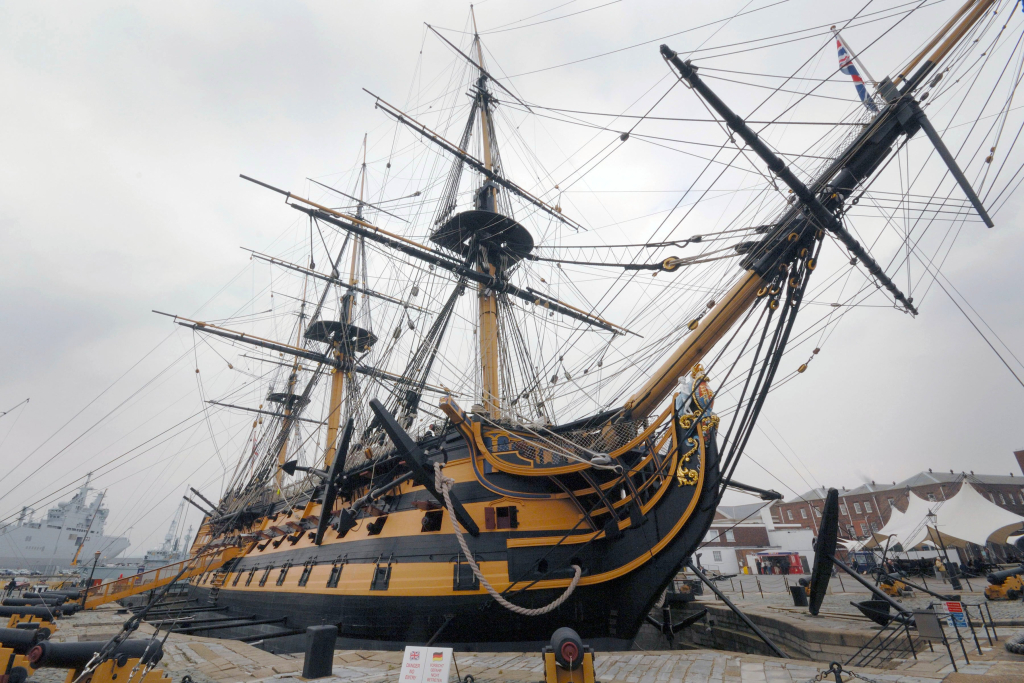Iconic British Naval Ships Throughout History
As of writing this article, the United Kingdom has approximately 70 commissioned vessels. This number is made up of ships and submarines. Today, the UK is still considered a military powerhouse, and the Royal Navy plays a significant role in this esteem.
One thing we love doing at Quorum is having little debates, that typically end up being friendly conversations. Recently, we discussed the Royal Navy and the ships that helped make it one of the greatest navies globally. So, if you are interested in ships, keep reading, and let us know what you think on our LinkedIn page.
Please note that this is a list of ships that we believe deserve to be talked about and they are not in a ‘best-to-worst’ order. We decided to include ‘HMS’ when speaking about the ships as it makes it easier to read for those who are not too familiar with what it means.
HMS Victory

You cannot talk about iconic ships without discussing the HMS Victory. The ship was built and completed in 1765, and it is still in commission today, more than 259 years later. The HMS Victory can be seen at the Portsmouth Historic Dockyard, and it still looks magnificent. It is important to remember that only about 20% of the ship is still original, with the rest being replaced to preserve the ship.
Being over two and a half centuries old, the Victory has seen its fair share of conflict, but its most famous battle was during one of the most significant naval battles in history, The Battle of Trafalgar, fought on October 21, 1805, during the Napoleonic Wars. The ship was under the command of Admiral Horatio Nelson. The battle of Trafalgar was instrumental in the British victory over the combined French and Spanish fleets.
The HMS Victory is a testament to the incredible engineering capabilities of the time, as one of the larger ships of the time it was quick and built to last. The ship was 69.3 meters (227 feet) and carried 104 guns, split between its three decks.
HMS Queen Elizabeth

The newest ship on this list is the HMS Queen Elizabeth and is one of the largest ships in the world. As of writing this article she is the third largest aircraft carrier currently in operation and is deployed in the Northeast Atlantic Ocean.
At 280 metres long and 70 metres wide (919 feet x 230 feet) the vessel can carry up to 72 aircraft. However, that number changes depending on what aircraft we are talking about. For example, she can only carry approximately 36 F-35B fighter jets. The HMS Queen Elizabeth has around 700 crew members and can accommodate 1600.
The 65,000-tonne ship can also defend herself against aircraft and missiles with her Phalanx Close-In Weapons System. Her three turrets fire off approximately 1500 rounds per minute and has a range of over 8km. The HMS Queen Elizabeth.
HMS Belfast
HMS Belfast is one of the cruiser class of warship, and was commissioned into the Royal Navy in 1939. At 187 metres (613 feet) long she had twelve Mk XXIII 6-inch guns in four triple turrets which could fire up to 96 rounds per minute in total.
She served in several prominent operations during WW2, including as an escort vessel for the Arctic Convoys and at the Battle of North Cape off Northern Norway. However, it’s most significant contribution came on D-day, bombarding the German forces along the coast and assisting the Normandy invasion.
The HMS Belfast also served in the Mediterranean, particularly in the Battle of Calabria and the Battle of Cape Spartivento. Finally, she served as a naval blockade while also bombarding the coastline during the Korean War.
You can see the HMS Belfast on the Thames; you are even allowed to explore the ship as it serves as a protected war memorial.
HMS Ark Royal
All of the ships we have talked about so far are still around today. However, the HMS Ark Royal sank on the 14th of November 1941. It was a sad day as many lives were lost. Her importance is so great that the name has been used in several aircraft carriers as a memorial to the ship’s legacy.
While in the Mediterranean, the HMS Ark Royal was hit by a torpedo sent from the German submarine U-81. The ship did not go down alone, as she hit the German battleship Bismarck with Swordfish torpedo bombers.
It had a length of 243 metres (800 feet) and was equipped with an armoured flight deck and an island structure on the starboard side, and the ship had a total displacement of 22,000 tonnes.
The HMS Ark Royal was equipped with Six 8-barrelled 2-pounder ‘pom-pom’ guns, eight 4-barrelled .50-inch (12.7 mm) machine guns, and was equipped with an armoured belt to protect her against Torpedoes.
What is Next for the Royal Navy?
The Royal Navy is known as one of the greatest navies in the world, so it is no surprise that they are not slowing down. By the mid-2030s, the Royal Navy will have deployed an additional 24 frigates and destroyers. This will act as a deterrent, while also solidifying the UK as a country with one of the greatest naval fleets.
The new Type 82 destroyers are proposed as an Air Defence warship that will replace the current fleet of six Type 45 Destroyers. The Royal Navy is expected to invest a lot of time and resources into the development of new weapons and improved weapons. For example, they have committed at least £18m into the Phalanx Gatling guns in hopes of keeping up with current threats.
Have Any Questions about your Supportability Needs? With us a problem shared is the start of a problem solved.
+44 (0) 1952 671950
info@qlsl.com
Don’t miss the next installment…
Register for support engineering insights and Quorum news, direct to your mailbox.



